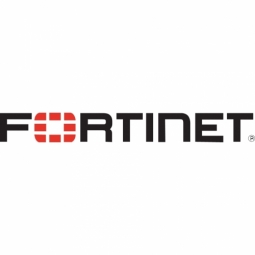Technology Category
- Networks & Connectivity - Ethernet
- Networks & Connectivity - Routers & Bridges
Applicable Industries
- Cities & Municipalities
- Telecommunications
Applicable Functions
- Product Research & Development
Use Cases
- Smart City Operations
- Tamper Detection
Services
- System Integration
About The Customer
The city of Mission is a picturesque community located in the forests of British Columbia, Canada. It is a bedroom community located about an hour outside of Vancouver, B.C., making it an attractive place for people who work in Vancouver but prefer to live in a quieter, more affordable area. The city is steeped in tradition and First Nations heritage, and is home to many artists and artisans. With a current population of around 41,000 residents, the city is growing rapidly, with projections indicating its population will double over the next quarter century. The city is always diligent about optimizing its use of tax dollars, with a focus on expanding the industrial and commercial tax base to shift the homeowner tax burden and attract new residents and businesses.
The Challenge
The city of Mission, located in British Columbia, Canada, is a rapidly growing community with a population projected to double over the next quarter century. The city's IT team, led by Chris Knowles, Manager of Information and Telecommunications Systems, is tasked with managing networking, security, telecommunications, and other technology needs across the city’s 17 locations. However, the team is small and does not have enough staff to dedicate most of their time to security remediation. The city was running security solutions from eight different vendors, leading to a complex infrastructure that made it difficult to achieve security goals. In 2020, an external security audit indicated that while the team was doing well in some areas, a network redesign could provide better resiliency and streamline security.
The Solution
The city of Mission engaged Vancouver-based Wirefire Solutions Inc. to develop a vendor-neutral network design that would simplify management and visibility into security events. After considering three proposals, the city chose Fortinet for its integrated products, management simplicity, and efficient transition process. The city worked with local provider IT Blueprint to deploy FortiGate Next-Generation Firewalls (NGFWs) and FortiSwitch enterprise switches. They created a new network that ran in parallel with the legacy network, gradually moving end-users over to the new network and deploying FortiAP access points and FortiWeb, Fortinet’s web application firewall. The city also rolled out the FortiClient endpoint solution for VPN connectivity, endpoint vulnerability scanning, and other endpoint protection features.
Operational Impact
Quantitative Benefit

Case Study missing?
Start adding your own!
Register with your work email and create a new case study profile for your business.
Related Case Studies.

Case Study
Turning A Stadium Into A Smart Building
Honeywell created what it called the “intelligent system” for the National Stadium in Beijing, China, turning the venue for the opening and closing events at the 2008 Summer Olympics into a “smart building.” Designed by highly controversial artist Ai Weiwei, the “Bird’s Nest” remains one of the most impressive feats of stadium architecture in the world. The 250,000 square meter structure housed more than 100,000 athletes and spectators at a time. To accommodate such capacity, China turned to Honeywell’s EBI Integrated Building Management System to create an integrated “intelligent system” for improved building security, safety and energy efficiency.
.png)
Case Study
Smart Street Light Network (Copenhagen)
Key stakeholders are taking a comprehensive approach to rethinking smart city innovation. City leaders have collaborated through partnerships involving government, research institutions and solution providers. The Copenhagen Solutions Lab is one of the leading organizations at the forefront of this movement. By bringing together manufacturers with municipal buyers, the Copenhagen Solutions Lab has catalyzed the development and deployment of next-generation smart city innovations. Copenhagen is leveraging this unique approach to accelerate the implementation of smart city solutions. One of the primary focus areas is LED street lighting.

Case Study
Buoy Status Monitoring with LoRa
The Netherlands are well-known for their inland waterways, canals, sluices and of course port activities. The Dutch Ministry of Infrastructure indicates that there are thousands of buoys and fixed items in and near water environments that would profit from IoT monitoring. One of the problems with buoys for example, is that they get hit by ships and the anchor cable breaks. Without connectivity, it takes quite some time to find out that something has happened with that buoy. Not to mention the costs of renting a boat to go to the buoy to fix it. Another important issue, is that there is no real-time monitoring of the buoys at this moment. Only by physically visiting the object on the water, one gains insight in its status.

Case Study
Barcelona Case Study
Barcelona’s heavy traffic and its associated high levels of pollution were the primary factors that motivated some companies and universities to work on strategies for improving traffic in the city centre. Bitcarrier is one of the technologies involved in the In4Mo Project, whose main objective is to develop the applications that form the core of smart mobility, one of the fundamental pillars of the smart city concept.

Case Study
China Mobile Smart Parking
Smart Parking, powered by NB-IoT technology, is making it easier for drivers to find free parking spots. Cities can better manage their parking assets and maximize the revenue available to them as a result. Drivers searching for parking create congestion and pollution by circling and hunting for available parking. Smart Parking services are able to significantly ease these problems by guiding a driver directly to a parking space.








